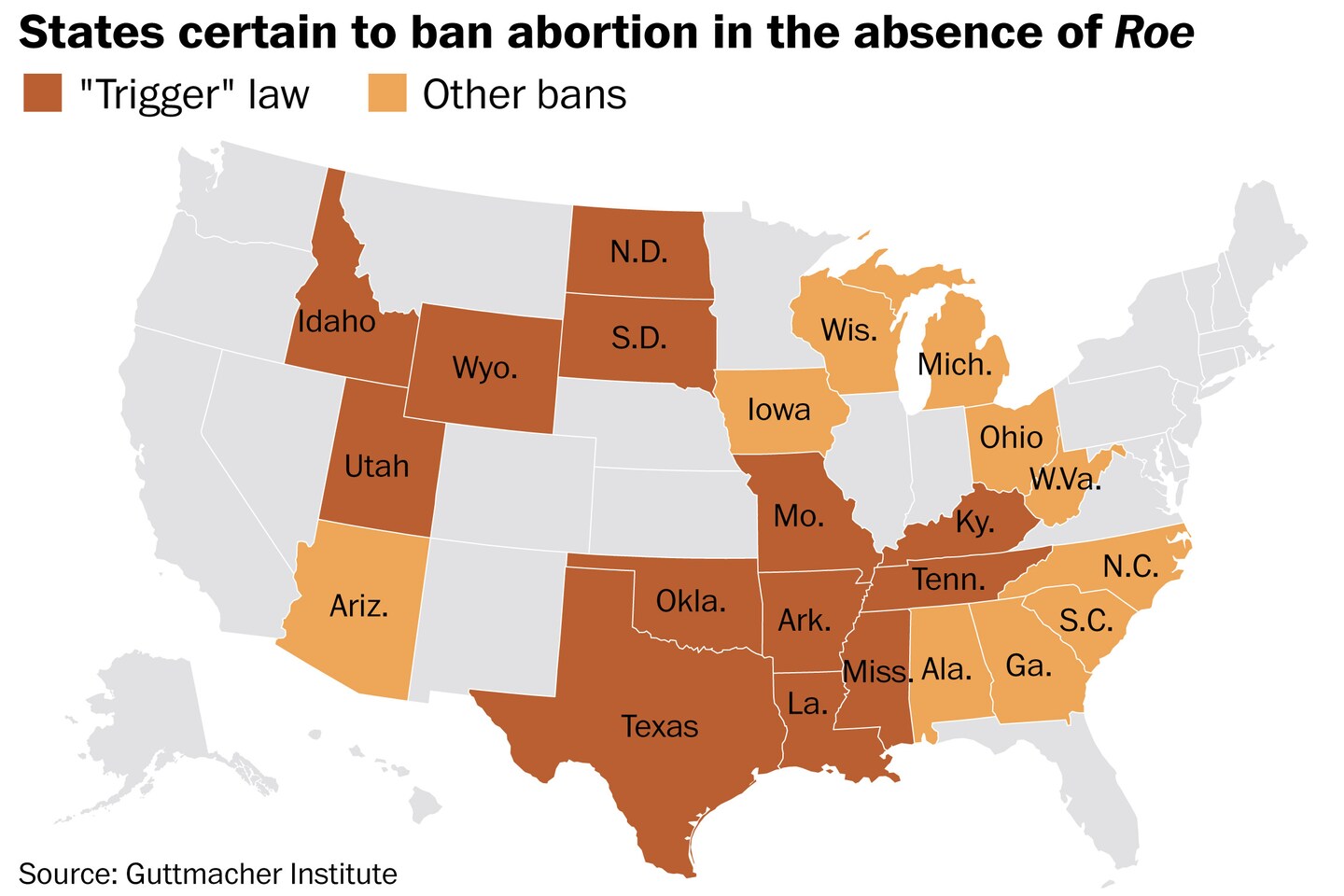If the Supreme Court overturns Roe v. Wade this summer, women in 13 states would immediately lose access to abortion in most cases, thanks to so-called “trigger” laws that outlaw abortion in all or most cases in the event that Roe falls. Four additional states, Arizona, Michigan, Wisconsin and West Virginia, have pre-Roe abortion bans on the books that could become enforceable again.
What it’s like to have a baby in the states most likely to ban abortion

In 2019, the latest year for which data from the Centers for Disease Control and Prevention is available, about 97,000 abortions were performed in states with trigger laws. If abortion is outlawed, an unknown number of pregnancies that would have been aborted will likely be carried to term.
The United States in general ranks poorly on a number of measures related to maternal support and outcomes, and a state-by-state breakdown offers a look at the varied experience of having and raising a child in this country. While child care tends to be more affordable in states with trigger laws, the rates of uninsured women and maternal deaths are among the highest in the country; no state with a trigger law or pre-Roe ban has legislation in place to guarantee paid leave, which helps women recover from giving birth without losing income.
The maps below show how every state fares on key factors that affect women, pregnancy and parenthood.
Paid leave
Paid family leave has been a fraught battle for over a century in the United States, one of the few countries in the world that does not offer paid maternity leave. The Family Medical Leave Act (FMLA), passed by Congress in 1993, guarantees 12 weeks of unpaid leave within one year, but it only applies to companies with 50 or more employees, and only to employees who have been with the company for a full year.
Ten states and Washington, D.C., have expanded on FMLA to provide some sort of paid leave. Massachusetts offers 12 weeks of paid leave, while California and D.C. offer eight. Other states provide nothing other than FMLA.
In states where abortion rights are likely to be rescinded, women earn lower salaries than women in other states.
Women in Idaho and Mississippi earn the lowest median salary, about $24,000. Next are West Virginia, Utah, New Mexico, Montana and Alabama, where women make about $25,000 on average.
Health insurance is an important factor in the ability to access prenatal, maternity and pediatric care; lack of insurance is linked to numerous negative outcomes for both mother and child.
Most states with trigger laws contain a high percentage of women who do not have private or public health insurance. Meanwhile, childbirth costs vary by area, but are typically more than $10,000 for a vaginal delivery. As of 2021, 26.3 percent of women ages 19 to 44 in Texas had no insurance coverage.
Child care
Families are generally more able to afford child care in trigger states than in others, but in Wyoming, for example, is expensive and not readily available. Quality child care is also lacking in many of these states, especially as a larger number of workers quit.
Maternal death rate
Maternal mortality has been on the rise in the United States, with Black women dying at nearly three times the rate as White women in 2020. The number of deaths of pregnant and new mothers in trigger states are among the highest.
The maternal death rate in states with abortion bans or trigger is 42 percent higher than in states with wider access.
Annys Shin and Dan Keating contributed to this report.






